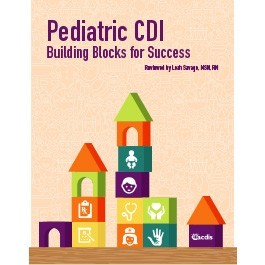Book Excerpt: The ins and outs of pediatric congenital cardiac conditions

check out the book!
CDI specialists working in the adult population are likely familiar with the pathophysiology of several common cardiac conditions and their necessary documentation (i.e., acute myocardial infarction, diastolic versus systolic heart failure, etc.). For the pediatric population, however, CDI specialists need to be familiar with a number of congenital cardiac conditions that may lead to hospitalization, resource-intensive treatments, and extensive care.
For some of these conditions, the care repercussions last the patient’s entire lifetime. Without documenting the condition accurately early in the patient’s life (as many of these conditions present at birth), that patient’s care can be negatively affected over the course of their lifetime.
Atrial septal defect
Atrial septal defect (ASD) is the second most common congenital heart defect (CHD). ASD is commonly seen in many of the more severe CHDs. It is also called patent foramen ovale (PFO). An ASD is a hole in the atrial septum between the right and left atria of the heart (thus allowing oxygenated blood from the left atrium to re-enter the right atrium and go into the lungs rather than into the body). This hole typically closes at birth or within a few weeks after birth. Children are usually asymptomatic. Subtle symptoms include poor weight gain, exertional dyspnea, and frequent respiratory infections. ASD is typically not detected until adulthood because it only produces subtle physical findings and generally requires little to no medical treatment on its own.
Atrioventricular septal defect
Atrioventricular septal defect (AVSD) makes up approximately 5% of cardiac malformations. It is a combination of closely associated defects with an ASD, VSD, and anomalies of the mitral and tricuspid valves. AVSDs are typically seen with other malformations and 30-40% are seen in patients with trisomy 21 (Down syndrome).
Two types of AVSD are:
- Incomplete or Partial: ASD and common AV valve (usually a cleft left mitral valve)
- Complete: ASD and VSD and a common AV valve
The right AV valve is the tricuspid valve and the left AV valve is the mitral valve.
Editor’s note: This article is an excerpt from the book Pediatric CDI: Building Blocks for Success.
